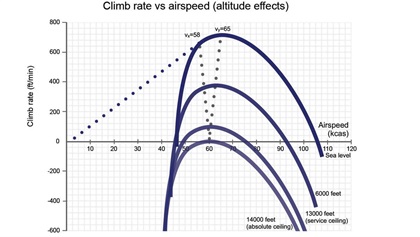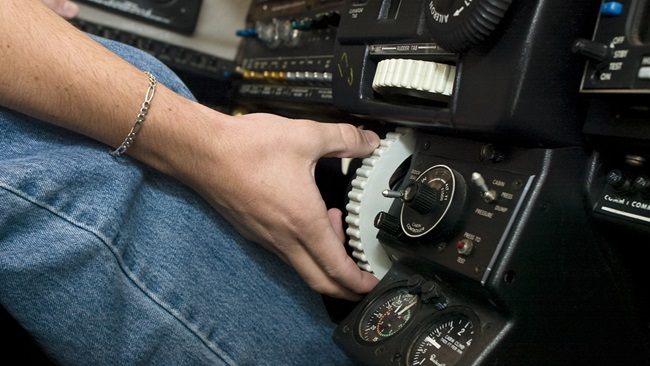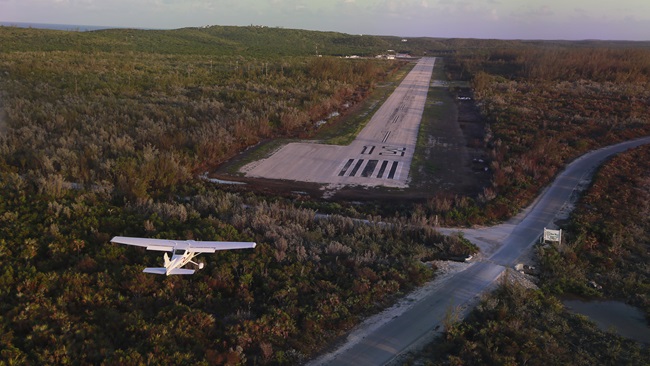I need a lift
Pushing the limits in a 152

After reiterating my aircraft type, the controller asked me how I got up that high. I shared his incredulity, but mine had more to do with the fact that he witnessed me in a climb. After all, I was sure that when I reached 15,800 feet, he had time to run down the street for a cup coffee and return to his screen before I hit 15,900.
Each phase of flight places its own demands for the climb capability of an aircraft. A high climb rate is desirable on departing an airport because altitude affords options in case of an engine failure or other emergency. To gain altitude quickly, the best rate of climb airspeed VY is perfect for the job. A pilot who takes off from a short runway with obstacles at the end may slow to the airspeed for the best angle of climb VX until clear of them. Once obstacles no longer present a problem, many pilots choose a cruise climb airspeed higher than VY to allow for better engine cooling and visibility over the aircraft nose. The graph on the facing page demonstrates how these airspeeds might vary with wind effects.
For aircraft with normally aspirated engines, the ability to climb degrades with increased altitude and even turbocharged aircraft have their limits. In cross-country flight planning, care must be exercised in selecting the route and altitude. Controllers expect aircraft to be able to climb at 500 fpm for traffic avoidance, and flying under instrument flight rules requires the ability to meet any climb gradients required by departure procedures, minimum en route altitude increases, or missed approach procedures. The climb/descent table in the FAA Terminal Procedures Publication provides a quick way to calculate the climb and descent rates (in feet per minute) necessary to meet the associated gradients (in feet per nautical mile).
It turns out that my anemic climb rate that day wasn’t exactly problematic; rather, it was expected. I had informed Huntsville Approach of my intention to perform a 70-turn spin in Wilbur, my Cessna 152 Aerobat, but it seems Memphis Center didn’t get the memo. Based on my calculations, I needed to climb to an altitude of 16,000 feet msl to perform the spin and execute the recovery above the FAA minimum altitude for aerobatic flight. The previous year I had completed a 60-turn spin by starting at 14,000 feet msl.
The ability of an aircraft to climb depends on myriad factors such as density altitude, propeller efficiency, and the health of the engine. The only one of those factors I could readily control was density altitude, so I waited for a cold day in January for which the density altitude at 16,000 feet fell below my absolute ceiling. Since a Cessna 152 isn’t exactly a rocket, I brought along my music so the long climb to altitude would be enjoyable. It turned out that 16,000 feet was my absolute ceiling because I had just one available airspeed, about 60 knots. If I held an airspeed either above or below 60 knots, the aircraft began to descend.
Once the controllers understood my mission, I commenced my long spin and they even communicated with me during it. Given my descent rate of 6,000 fpm and nose sweeping full circle every two seconds, I politely informed them that “Traffic, two o’clock, ten miles, same altitude” wasn’t particularly useful to me. But after about 35 turns the engine quit, the propeller came to a halt, and the nose pitched down enough so that Wilbur’s spin converted to a spiral. While muttering a few words from my occasional expanded vocabulary, I recovered to straight and level flight before the airspeed became dangerously high. The propeller stopping during an extended spin in Wilbur happens regularly with less than 18 gallons of fuel. I anticipated and had tried to prevent it by filling the tanks to the very top at the airport. Alas, it took me an hour to get to 16,000 feet and I burned off too much fuel in the process.
The next day I tried it again with another long climb to Wilbur’s absolute ceiling followed by similar results. It turns out that I have reached the limits of his ability to climb in order to go beyond my 60-turn spin. Short of getting a lift up to a higher altitude using another aircraft, I suppose I will have to content myself with it.
 The blue curve shows rate of climb versus airspeed at sea level on a standard day for a general aviation aircraft. The airspeed that results in the maximum climb rate (the greatest altitude gain per unit of time) is VY = 65 KCAS. Best rate of climb airspeed is unaffected by the motion of the air. Because the curve is flat at VY, a cruise climb airspeed slightly faster than VY doesn’t affect climb ability much and provides increased engine cooling and visibility over the nose.
The blue curve shows rate of climb versus airspeed at sea level on a standard day for a general aviation aircraft. The airspeed that results in the maximum climb rate (the greatest altitude gain per unit of time) is VY = 65 KCAS. Best rate of climb airspeed is unaffected by the motion of the air. Because the curve is flat at VY, a cruise climb airspeed slightly faster than VY doesn’t affect climb ability much and provides increased engine cooling and visibility over the nose.  For aircraft with normally aspirated engines, climb rate degrades with an increase in altitude. At sea level on a standard day, this aircraft is capable of climbing at a rate of 725 fpm using the best rate airspeed of VY = 65 KCAS. If obstacles are an issue, then the best angle airspeed of VX = 58 KCAS is helpful. At higher altitudes, the curve moves downward and the best-angle speed increases. As altitude increases, the best-rate airspeed decreases because the curve shifts slightly to the left. (The actual shape of the curve changes slightly as well. For more complete details, consult chapter 7 of John Denker’s online text See How It Flies, av8n.com.) This aircraft reaches its service ceiling at the altitude for which the best rate of climb is 100 fpm and the range of available calibrated airspeeds narrows. Once it reaches its absolute ceiling, the aircraft is just barely able to hold altitude at only one airspeed that is simultaneously VX, VY, and cruise airspeed, for that matter. —CC
For aircraft with normally aspirated engines, climb rate degrades with an increase in altitude. At sea level on a standard day, this aircraft is capable of climbing at a rate of 725 fpm using the best rate airspeed of VY = 65 KCAS. If obstacles are an issue, then the best angle airspeed of VX = 58 KCAS is helpful. At higher altitudes, the curve moves downward and the best-angle speed increases. As altitude increases, the best-rate airspeed decreases because the curve shifts slightly to the left. (The actual shape of the curve changes slightly as well. For more complete details, consult chapter 7 of John Denker’s online text See How It Flies, av8n.com.) This aircraft reaches its service ceiling at the altitude for which the best rate of climb is 100 fpm and the range of available calibrated airspeeds narrows. Once it reaches its absolute ceiling, the aircraft is just barely able to hold altitude at only one airspeed that is simultaneously VX, VY, and cruise airspeed, for that matter. —CC

